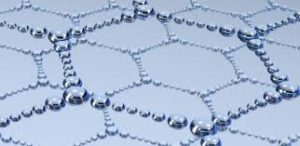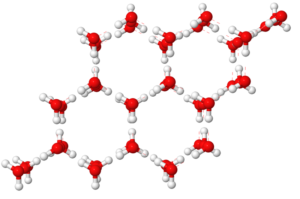 There’s a “hoity-toity” thing that goes on among some Tea drinkers: that the water should be brought almost to boiling, but not all the way there. Full boil is called “burning the tea.”
There’s a “hoity-toity” thing that goes on among some Tea drinkers: that the water should be brought almost to boiling, but not all the way there. Full boil is called “burning the tea.”
Turns out they may be right, but for the most unlikely reason rather than the accepted explanation of “burning the tea”.
There’s a thing that happens to Water(1) right in the last couple of degrees or couple of moments prior to entering a full boil. It has been shown that in those moments water will actually form itself into hexagonal columns(2). Water can do that. In fact, it can form the most amazing quasi-structures with nothing except itself. If you want to know more about that, there’s a thing called the “hydrogen bond” and you can Google that.

Water aligning itself in hexagonal arrays (rendering, not an actual picture, in case that isn’t obvious)
I’m left wondering if this is why there is a difference in the taste of Tea (which, in fact, there is, though it’s subtle) when prepared “properly,” though their explanation may be all wrong(3). Does hexagonally arranged water take up vegetable essence(s) differently?

Water also does this same thing when it converts to ice (which is a “phase change” just as is going from non-boiling to boiling. This is why ice takes up more room than the equivalent amount of water did. Those are water molecules arranged into hexagons via their hydrogen-hydrogen bonds.
Granted, it doesn’t stay in that arrangement for long, certainly not after being poured into a mug to excite and delight the tea bag. Still… could it be related?
In fact, I think this probably is the case(4) and I suspect this might even have applications in nutrition, pharmacology, industrial chemistry, space medicine and low-gravity manufacture, and such. Perhaps it’s already a known phenomenon and I’m just discovering a well-known principle on my own. How would I know?
Do you know?
Want some Tea?
[30]
(1) Water is a surprisingly complex substance, and continues to delight and baffle scientists, philosophers and theologians alike.
(2) Water can do the most amazing things, and it still looks to the Human Eye exactly the same, but the molecular structures can be arbitrarily complex. Oddly enough, the structure of the Sun has been demonstrated (by the various Solar Observatory satellites) to also organize itself into hexagonal cells. I don’t think that means the Sun is made of water, though… 🙂
(3) Does having the wrong explanation matter if the end results are the same? That’s a discussion all in itself. Maybe that’s even a book.
(4) I do have to say that the usual explanation of “boiling water burns the tea” is unlikely. 212 degrees Fahrenheit / 100 degrees Celsius just doesn’t burn that many things… save fingers, of course.